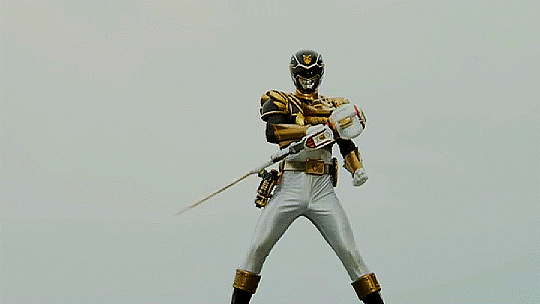#Agri
Text
THE BUNNIES 🥺



75 notes
·
View notes
Text

This is the show. This is Goseiger.
#poor nozomu#the small child is the only human in a cast of feather headded muppets lol#nozomu amachi#goseiger#tensou sentai goseiger#alata#moune#agri#hyde#eri#i love them aaaahaha#having a great time#catch me eying my target audience of one lol
94 notes
·
View notes
Text
Agri shows off an important part of Landic society: the courtship dance. Just to share his culture with Hyde, and all. Not for any other reason, of course. And of course it's only fair that Hyde should show him his own, too. Again, just as a cultural exchange type of thing, not because he's interested in courting him...
9 notes
·
View notes
Photo










Back In Black
↳ Tensou Sentai Goseiger - Agri - Gosei Black
#tensou sentai goseiger#goseiger#agri#agri (goseiger)#agri goseiger#gosei black#super sentai#tokuedit#please do not repost#umbrella.edits#umbrella.gifs#umbrella.posts#gifs.bib2#flashing lights#flashing lights tw#agri's so underappreciated i'm losing it#anyways i love him#he's so dramatic sometimes and has some nice dynamics#i think his dynamics with moune and hyde are my favorites but i do like all of them#thinking about how gosei knight called him vain that one time and he was so offended
65 notes
·
View notes
Text
Olmaz olsun böyle ağrı ya resmen basım tornavidayla deliniyo cildircam yaa
2 notes
·
View notes
Text
BREAKDOWN part 2 spoilers
love me ren-ren doodles

25 notes
·
View notes
Text
Step-by-Step: The Comprehensive Process of Agriculture
Welcome to a detailed exploration of the fascinating world of agriculture! In this article, we will take you on a journey through the step-by-step process of agriculture, uncovering the intricate techniques and practices that cultivate the food we enjoy every day. From seed selection to harvest, each stage plays a crucial role in producing high-quality crops.
Welcome to a detailed exploration of the fascinating world of agriculture! In this article, we will take you on a journey through the step-by-step process of agriculture, uncovering the intricate techniques and practices that cultivate the food we enjoy every day. From seed selection to harvest, each stage plays a crucial role in producing high-quality crops.
Importance of Agriculture in…

View On WordPress
#aagriculture#Advantages of Agriculture#AGRI#agri business ideas#agri startup ideas#Agri-Markets#Agri-Tech Startups#agri.#Agribusiness#Agribusiness Sector#Agribusinesses#agricultural#agricultural communities#Agricultural Education#Agricultural Export Opportunities#Agricultural Industry#Agricultural Innovation#Agricultural Innovations#Agriculture#AmardeepSekhon1#Crop Management#farm#farm activities#Farmer#farming#Farming Challenges#Farming Communities#gardening#Irrigation#Organic farming
3 notes
·
View notes
Link
Carbofuron 3% CG – Greenwood Pesticides
Brand Name – Hamala
In the realm of agriculture, safeguarding crops from voracious insects is a paramount concern for farmers worldwide. In this pursuit, various pesticides and insecticides have been developed to combat the threat of crop damage. One such effective solution is Carbofuran 3% CG, a powerful insecticide that plays a vital role in protecting agricultural yields. In this blog post, we will delve into what Carbofuran 3% CG is, how it works, its benefits, and considerations for its responsible use.
What is Carbofuran 3% CG?
Carbofuran 3% CG is a chemical compound belonging to the carbamate family. It is primarily used as an insecticide and nematicide, making it a valuable tool for pest management in agriculture. The “3% CG” designation refers to its formulation as a granular product with 3% active ingredient concentration.
How Does Carbofuran 3% CG Work?
Carbofuran 3% CG disrupts the nervous system of insects, ultimately leading to their paralysis and death. When applied to the soil or directly onto crops, it is absorbed by plant roots and translocated throughout the plant. This systemic action makes it highly effective in protecting crops from a wide range of insect pests. It interferes with the acetylcholinesterase enzyme in insects, disrupting the normal transmission of nerve impulses and causing paralysis.
Benefits of Using Carbofuran 3% CG:
Broad Spectrum Pest Control: Carbofuran 3% CG is known for its effectiveness against a wide variety of soil-dwelling and foliar pests, including nematodes, aphids, thrips, and whiteflies. This versatility makes it a valuable asset for integrated pest management (IPM) programs.
Immediate Action: The quick mode of action of Carbofuran 3% CG means that pests are rapidly incapacitated, reducing the potential for crop damage.
Increased Crop Yields: By protecting crops from insect damage, this insecticide helps farmers achieve higher yields and improve the overall quality of their produce.
Reduced Environmental Impact: While effective against pests, Carbofuran 3% CG degrades relatively quickly in the environment, reducing the risk of long-term soil or water contamination when used responsibly.
Considerations for Responsible Use:
Follow Label Instructions: Always read and follow the manufacturer’s instructions and guidelines for application, dosage, and safety precautions.
Protective Gear: When handling Carbofuran 3% CG, wear appropriate personal protective equipment (PPE) to minimize exposure.
Application Timing: Apply the insecticide at the recommended timing for maximum effectiveness while minimizing potential harm to non-target organisms.
Resistance Management: To prevent the development of insecticide resistance, rotate Carbofuran 3% CG with other pest control methods in your IPM strategy.
Environmental Impact: Be mindful of potential environmental impacts, such as runoff into water bodies, and follow best practices for responsible pesticide use.
Conclusion:
Carbofuran 3% CG is a powerful tool in the fight against crop-damaging insects. Its quick action, broad-spectrum efficacy, and potential for increased crop yields make it a valuable asset for farmers. However, it is crucial to use this insecticide responsibly, following label instructions and considering its environmental impact. When used as part of an integrated pest management approach, Carbofuran 3% CG can contribute to sustainable and productive agriculture.
Croto is a broad spectrum organophosphate systemic Insecticide cum acaricide with contact & stomach action.
Crop: Cotton, Sugarcane, Paddy, Mustard
Pest: Sucking, Chewing, Biting insects, BPH, GLH, Shootfly, Pod Borer etc.
Doses: 625ml – 1.5 Liter per ha*
*These doses are only indicative. Exact Dose & Dilution may vary according to the crop, crop stage, Pest Infestation & local recommendations.
Carbofuron 3G is a systemic insecticide used for the control of Maize, Sugarcane, and Rice stem borers. It kills the pest by its contact & stomach mode of actions.
“Empowering Agriculture with Innovative Solutions – Greenwood Pesticides“
#greenwood#greenwoodpesticides#pesticides#insecticides#herbicides#fungicides#insects#agriculture#farming#farmers#soil#crop#farm#spray#vegan#fertilizer#agribusiness#agri#haryana#india#farminglife#soilhealth#pestcontrol#chemical#pesticidesfree#nature#bugs#gardening#food#healthyfood
2 notes
·
View notes
Photo

#revisão Implicações fisiológicas ocasionadas por elementos climáticos em hortaliças-fruto. Revista Agrária Acadêmica, v. 5, n. 5, set-out, p. 9-21, 2022. DOI: 10.32406/v5n5/2022/9-21/agrariacad ISSN 2595-3125 #agronomia #zootecnia #alimentos #agro #agronomy #agri #soil #alimento #food #vegetal #foodscience #horticultura #produçãovegetal #posgraduacao #mestrado #mestrando #mestranda #doutorado #doutorando #doutoranda #geografia #tecnologiadealimentos #ifap #fruta #fruticultura #plantas #fruit #clima #existepesquisanobr https://www.instagram.com/p/CoZwGCNOO80/?igshid=NGJjMDIxMWI=
#revisão#agronomia#zootecnia#alimentos#agro#agronomy#agri#soil#alimento#food#vegetal#foodscience#horticultura#produçãovegetal#posgraduacao#mestrado#mestrando#mestranda#doutorado#doutorando#doutoranda#geografia#tecnologiadealimentos#ifap#fruta#fruticultura#plantas#fruit#clima#existepesquisanobr
2 notes
·
View notes
Text

11 notes
·
View notes
Text
Best Organic Nutrients for Plant Growth - Nova Drip
Kay Bee Bio Organics NOVA DRIP is a Specialized product formulated by using natural seaweed extracts containing natural and essential nutrients required for plant growth. It has the ability to strengthen the roots and enhancement white roots.

#nova#drip#farm#farms#farming#farmings#agri#agro#agriculture#sustainability#sustainable#organics#organicfarming#food#fruits#trees#plants#gardening#gardens#india#usa#uk#canada#europe#germany#tumb#tumblr#kb#kaybeebio#kaybee
2 notes
·
View notes
Photo

NEW HOLLAND T7040 📸 STEENOKKERZEEL 🗓️ 2017/09/29 #photographedbyhermanwalraet© #hewapic© #landbouw #agriculture #trekker #tractor #fendt #boeren #farm #farmlife #farming #newholland #johndeere #claas #landwirtschaft #agri #tuinbouw #agrarischesector #landwirt #kassen #ondernemen #netwerken #photography #photo #landbouwfotografie #koeien #field #agriculteur #femmedefermier #boer (bij Steenokkerzeel) https://www.instagram.com/p/CkvuwbfIOKw/?igshid=NGJjMDIxMWI=
#photographedbyhermanwalraet©#hewapic©#landbouw#agriculture#trekker#tractor#fendt#boeren#farm#farmlife#farming#newholland#johndeere#claas#landwirtschaft#agri#tuinbouw#agrarischesector#landwirt#kassen#ondernemen#netwerken#photography#photo#landbouwfotografie#koeien#field#agriculteur#femmedefermier#boer
5 notes
·
View notes
Text
Crop Rotation Techniques: Enhancing Soil Health and Nutrient Cycling
Crop rotation stands as one of the oldest and most effective practices in agriculture, offering a natural way to improve soil health and maximise crop productivity. By rotating different crops in a systematic manner, farmers can replenish soil nutrients, suppress pests and diseases, and enhance overall soil structure. Lets delve into the principles and benefits of crop rotation techniques and explore how they contribute to sustainable farming practices.
At its essence, crop rotation involves the sequential planting of different crops in the same field over multiple seasons or years. Each crop in the rotation cycle plays a unique role in soil fertility and pest management, complementing and benefiting from the others. For example, leguminous crops such as soybeans and peas have the ability to fix nitrogen from the air through symbiotic relationships with nitrogen-fixing bacteria, enriching the soil with this essential nutrient.
One of the key benefits of crop rotation is its ability to break pest and disease cycles. By alternating crops with different growth habits and susceptibility to specific pests and pathogens, farmers can disrupt the buildup of pest populations and reduce the need for chemical pesticides. For instance, rotating between cereal grains and legumes can help control weeds, pests, and diseases that target specific crop species, leading to healthier crops and higher yields.
Furthermore, crop rotation promotes efficient nutrient cycling and soil fertility. Different crops have varying nutrient requirements and uptake patterns, and by rotating crops with complementary nutrient needs, farmers can prevent soil depletion and maintain balanced nutrient levels. For example, deep-rooted crops like corn can access nutrients from deeper soil layers, while shallow-rooted crops like lettuce can utilise nutrients closer to the surface, ensuring efficient nutrient utilisation and minimising nutrient leaching.
Additionally, crop rotation contributes to improved soil structure and water retention. Diverse crop rotations with a mix of taproot and fibrous root systems help break up compacted soil, enhance soil aggregation, and improve water infiltration. Moreover, the residues left behind by different crops provide organic matter that feeds soil microbes and promotes beneficial soil organisms, further enhancing soil health and resilience to environmental stresses. Implementing effective crop rotation techniques requires careful planning and consideration of factors such as crop compatibility, nutrient requirements, and pest dynamics. Farmers often develop rotation schedules based on the specific needs of their crops and the unique characteristics of their soils and climate. Some common crop rotation sequences include the traditional three-field system, where crops are rotated between cereals, legumes, and fallow, as well as more complex rotations involving multiple crops and cover crops.
In conclusion, crop rotation techniques offer a time-tested approach to enhancing soil health, nutrient cycling, and pest management in agricultural systems. By diversifying cropping patterns and harnessing the complementary interactions between different crops, farmers can improve soil fertility, suppress pests and diseases, and build resilience to environmental stresses. As we continue to embrace the principles of crop rotation and integrate them into sustainable farming practices, we pave the way for healthier soils, higher yields, and a more resilient food system
or future generations.
For more information and to enroll, visit our website or contact us at https://mima.edu.in/agriculture-program-details/
0 notes
Text
youtube
#youtube#social media#travel#vacation#nature#landscape#tamilnadu#wonderful places#tamilnet#coimbatore#agriturismo#agricoltura#agribusiness#agriculture#agritech#agri#cultivation#organic vegetables#organic farming#organic#organic food#vegetation#vegetables#farmacia#farming#farmers#farmlife#farm#exhibition#expo2024
1 note
·
View note



